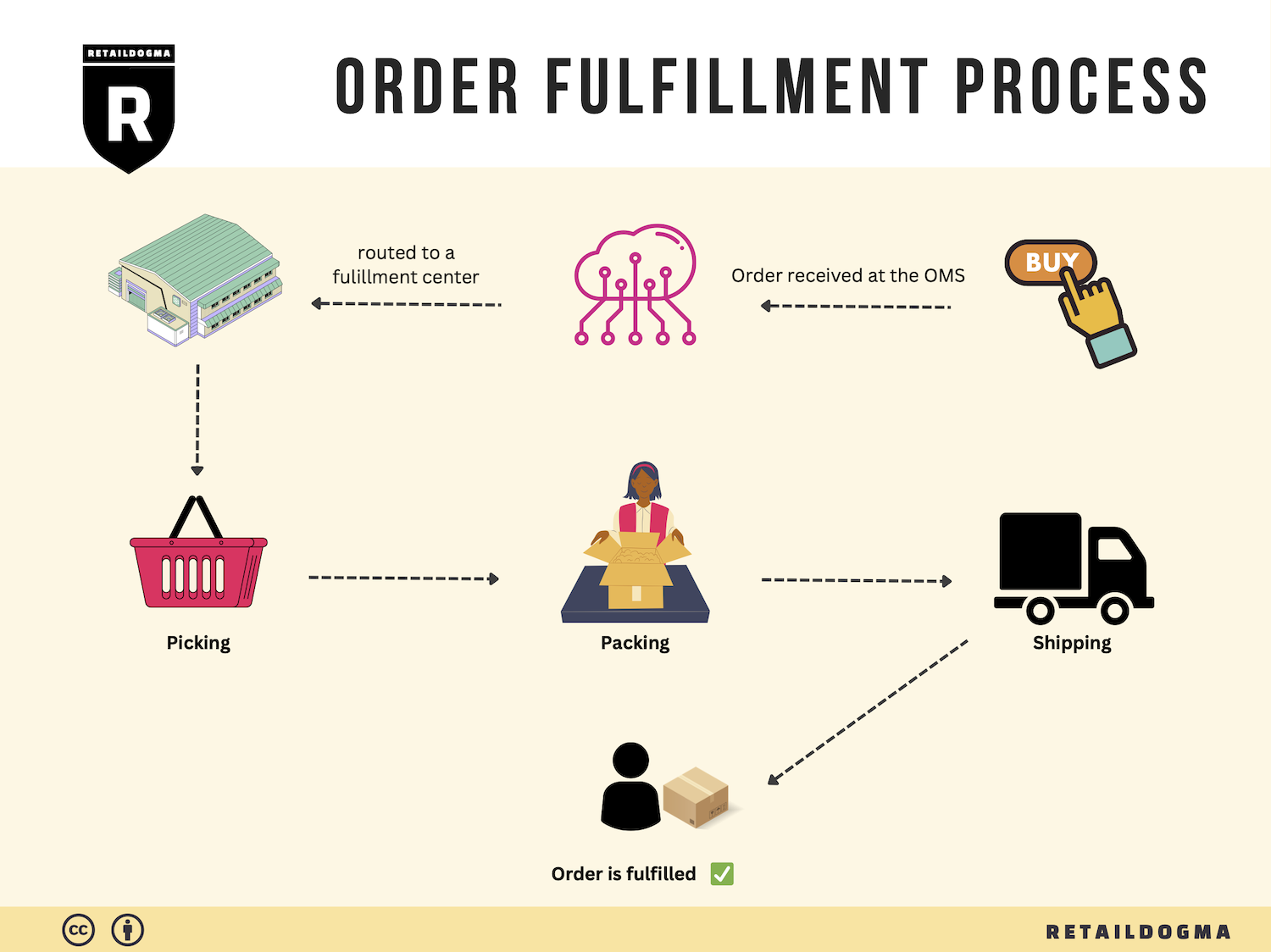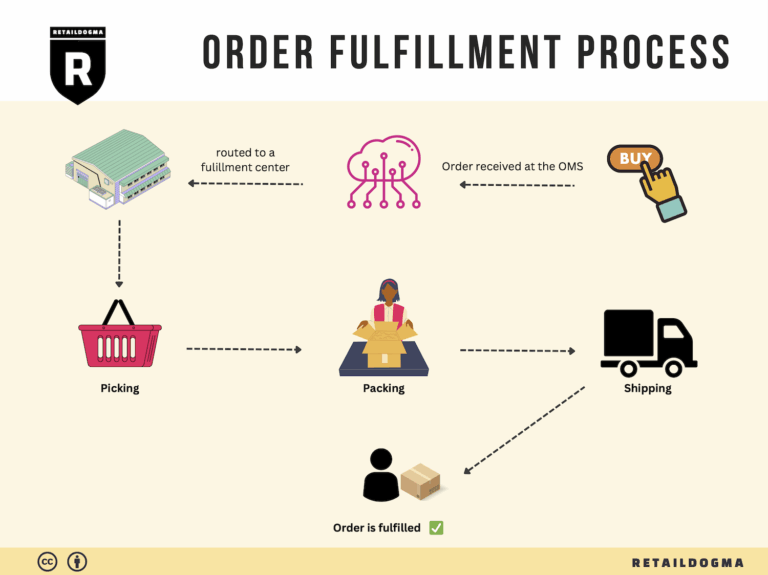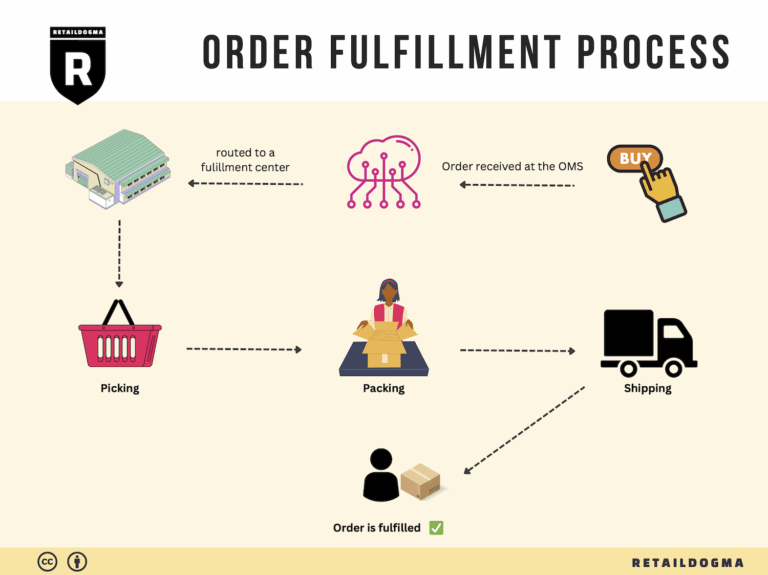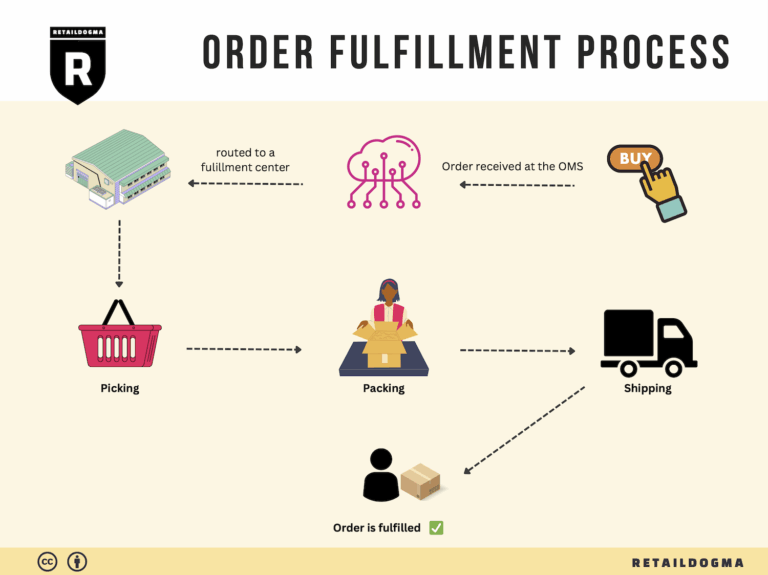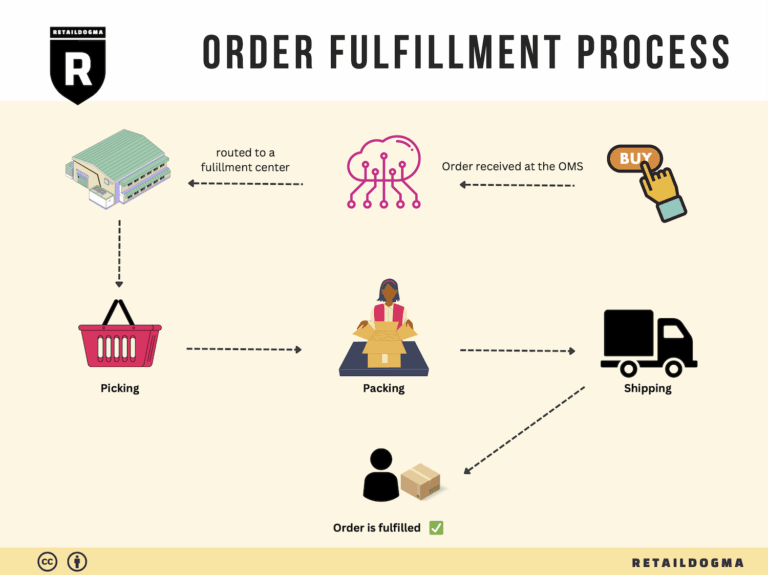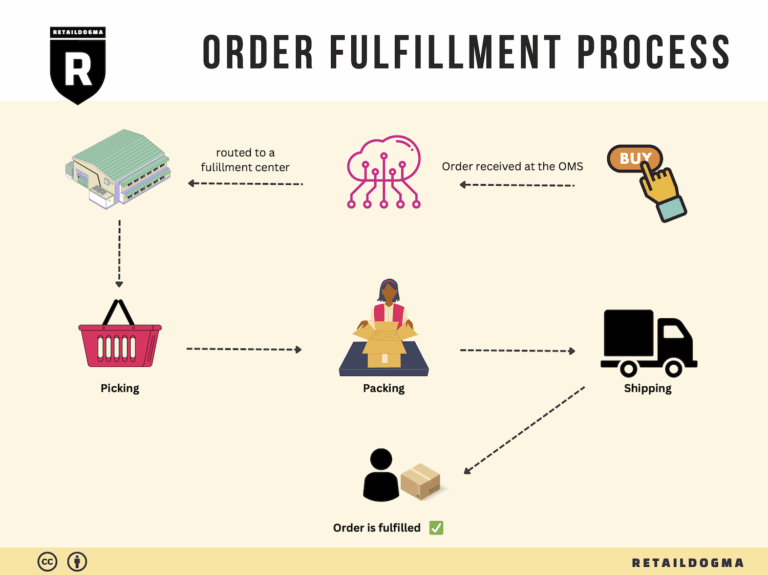What Is A Fulfillment Center? A Complete Guide (2025)
What is E-commerce Fulfillment? An Introduction for Growing Businesses
Understanding E-commerce Fulfillment
As an e-commerce business owner or operations manager, you may find yourself grappling with the complexities of packing and shipping orders. The initial excitement of launching your online store can quickly turn into a daunting task when faced with the logistical challenges of getting products to your customers efficiently. This is where e-commerce fulfillment comes into play—a crucial element in your business’s success.
E-commerce fulfillment is simply the process of receiving, processing, and delivering orders to customers. It encompasses everything from inventory management and order processing to packing and shipping. As your business grows, the fulfillment process can become overwhelming, leading to delays, mistakes, and ultimately, dissatisfied customers. This guide aims to demystify the fulfillment landscape and provide you with practical insights to streamline your operations.
What This Guide Covers
In this guide, we will explore various fulfillment models, including third-party logistics (3PL) and Fulfillment by Amazon (FBA). Each model has its advantages and disadvantages, and understanding them will help you make informed decisions about which one best fits your business needs.
We will also delve into the core services that fulfillment partners typically offer, such as inventory storage, order picking and packing, shipping management, and returns processing. Knowing what services are available will empower you to choose a partner that aligns with your operational goals.
Choosing the right fulfillment partner is a critical step in scaling your business. We will discuss key factors to consider, such as location, technology integration, customer service, and scalability. These elements can significantly impact your efficiency and customer satisfaction.
Pricing is another vital aspect we will cover. Understanding the cost structures associated with different fulfillment options will enable you to budget effectively and maintain healthy profit margins.
Empowering Your Business Decisions
Ultimately, this guide aims to empower you to make smart decisions about your logistics strategy. By equipping you with the knowledge to navigate the complexities of e-commerce fulfillment, you can focus on what truly matters—growing your business and delighting your customers. Whether you’re considering outsourcing fulfillment or optimizing your current processes, the insights provided here will serve as a valuable resource on your journey to scaling success.
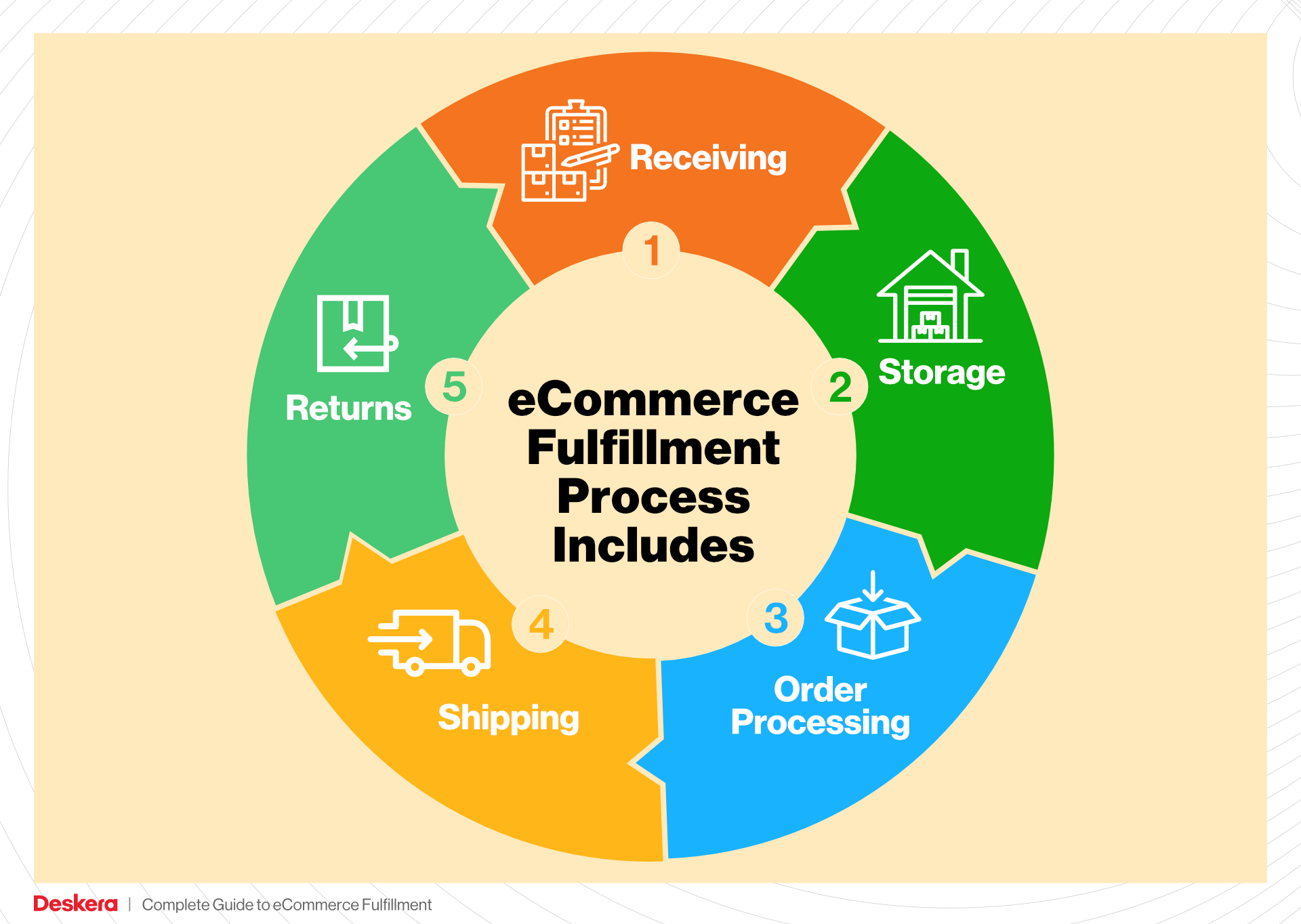
What You’ll Learn In This Guide
- What is E-commerce Fulfillment? An Introduction for Growing Businesses
- The Order Fulfillment Process: From ‘Buy’ Button to Customer’s Door
- Comparing Fulfillment Models: In-House vs. 3PL vs. Dropshipping
- A Deep Dive into Amazon FBA: Pros, Cons, and Who It’s For
- Core Services Offered by Fulfillment Centers
- How to Choose a Fulfillment Partner: A 6-Point Checklist
- Understanding Fulfillment Pricing: A Breakdown of Common Fees
- Frequently Asked Questions (FAQs) about Fulfillment
- Conclusion: Is Outsourcing Fulfillment the Right Move for Your Business?
- Important Disclaimer
The Order Fulfillment Process: From ‘Buy’ Button to Customer’s Door
1. Receiving Inventory
The first step in the order fulfillment process involves receiving inventory at the fulfillment center. When products arrive, they are unloaded from delivery trucks and checked for accuracy against purchase orders. This step is crucial for ensuring that the right products are in the right quantities, as discrepancies can lead to stockouts or excess inventory, both of which can negatively impact sales and customer satisfaction.
During the receiving process, products are assigned a unique identifier, commonly referred to as a Stock Keeping Unit (SKU). This identifier allows for efficient tracking of inventory levels and sales performance. The accurate receipt of inventory establishes the foundation for all subsequent steps in the fulfillment process.
2. Warehouse Storage
Once the inventory is received and verified, it is then stored in designated locations within the warehouse. The organization of this storage is essential for optimizing space and facilitating quick access to products. Warehouses often utilize various storage methods, such as pallet racking or shelving, depending on the type of products being stored.
Proper warehouse storage is important because it impacts the efficiency of the order fulfillment process. A well-organized storage system minimizes the time it takes to locate products and prepare them for orders. Key terms associated with this step include “bin location” and “inventory management system,” which help in tracking where each SKU is stored and managing stock levels effectively.
3. Order Picking
When a customer places an order, the next step is order picking, where items are retrieved from their storage locations. This process can be executed through various methods, including single order picking, batch picking, or zone picking, depending on the volume and nature of the orders.
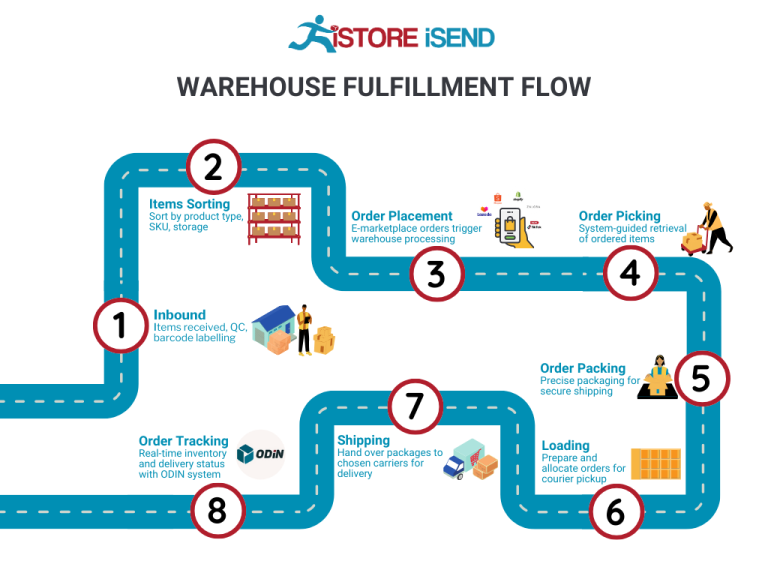
Order picking is a critical step, as it directly influences order accuracy and fulfillment speed. A common tool used in this phase is the pick list, which outlines the items that need to be gathered for a specific order, along with their respective locations in the warehouse. Efficient order picking not only enhances customer satisfaction through timely deliveries but also reduces operational costs by minimizing labor time and error rates.
4. Order Packing
After the items have been picked, they are then packed for shipment. This step involves selecting appropriate packaging materials, ensuring products are secured to prevent damage during transit, and labeling the packages correctly with shipping information and barcodes.
Order packing is vital because it protects the products and ensures compliance with shipping regulations. Additionally, effective packing can reduce shipping costs by maximizing the use of space and minimizing weight. Key terms associated with this step include “packing slips” and “void fill,” which refer to documents included in the package that detail the order and materials used to protect items during transport.
5. Shipping & Delivery
The final step in the order fulfillment process is shipping and delivery. Once the order is packed, it is handed over to a carrier for transportation to the customer’s address. This phase includes selecting the appropriate shipping method based on cost, speed, and customer preferences.
Shipping and delivery are crucial for maintaining customer satisfaction and loyalty. Timely deliveries can significantly enhance the customer experience, while delays can lead to dissatisfaction and potential loss of business. Key terms in this step include “last-mile delivery” and “tracking number,” which refer to the final leg of the delivery process and the unique identifier that allows customers to monitor their order’s progress.
In conclusion, understanding the order fulfillment process—from receiving inventory to delivering the order to the customer’s door—is essential for e-commerce business owners and operations managers. Each step is interconnected, and optimizing this process can lead to improved efficiency, reduced costs, and enhanced customer satisfaction, all of which are vital for scaling a successful e-commerce business.
Comparing Fulfillment Models: In-House vs. 3PL vs. Dropshipping
Fulfillment Model Comparison
| Model | Who Handles Inventory | Best For (Business Stage) | Key Advantage | Key Disadvantage |
|---|---|---|---|---|
| In-House Fulfillment | Business (Owner) | Established Businesses | Complete control over inventory and operations | High overhead costs and complexity |
| Third-Party Logistics (3PL) | Third-Party Provider | Growing Businesses | Scalability and flexibility in logistics | Potential loss of control and dependency on provider |
| Dropshipping | Supplier | Startups/Small Businesses | Low upfront investment and minimal risk | Lower profit margins and potential fulfillment delays |
In-House Fulfillment
In-house fulfillment involves a business managing its own inventory, warehousing, and shipping processes. This model is ideal for established businesses that have the resources and infrastructure to handle logistics independently. One of the most significant advantages of in-house fulfillment is the complete control it affords over inventory management, order processing, and customer experience. Companies can tailor their operations to their specific needs, ensuring quality and consistency in service delivery. However, this model comes with notable disadvantages, including high overhead costs associated with warehousing, staffing, and technology investments. As a business scales, the complexity of operations can increase, requiring more sophisticated management and resources, which can strain smaller businesses.
Third-Party Logistics (3PL)
Third-party logistics (3PL) providers manage the storage, packing, and shipping of products on behalf of businesses. This model is particularly advantageous for growing businesses that need to scale their operations without the burden of managing logistics internally. The primary benefits of using a 3PL include scalability and flexibility; businesses can quickly adapt to changes in demand without the need for significant investments in infrastructure. Additionally, 3PLs often have established networks and expertise in logistics, allowing for potentially faster shipping and better overall efficiency. However, the key disadvantage of this model is the potential loss of control over inventory and fulfillment processes. Relying on a third party can lead to challenges in communication and coordination, which may impact customer satisfaction if not managed properly.
Dropshipping
Dropshipping is a fulfillment model where the retailer does not keep goods in stock. Instead, when a customer places an order, the retailer purchases the item from a third-party supplier who then ships it directly to the customer. This model is particularly well-suited for startups and small businesses, as it requires minimal upfront investment and eliminates the need for warehousing. Retailers can offer a wide range of products without the financial burden of holding inventory. However, dropshipping also has its challenges. The most significant downside is typically lower profit margins since retailers must pay the supplier’s price while also covering shipping costs. Additionally, reliance on suppliers for order fulfillment can lead to delays and inconsistencies, which can negatively affect customer experience. As a result, while dropshipping can be a low-risk entry point into e-commerce, it requires careful management to ensure quality and reliability.
A Deep Dive into Amazon FBA: Pros, Cons, and Who It’s For
Understanding Fulfillment by Amazon (FBA)
Fulfillment by Amazon (FBA) is a service provided by Amazon that allows sellers to store their products in Amazon’s fulfillment centers. In turn, Amazon takes care of storage, packaging, and shipping of these products directly to customers. This service enables sellers to leverage Amazon’s vast logistics network, thereby enhancing their reach and operational efficiency.
When a customer orders a product, Amazon handles the entire process—from picking the item from the warehouse, packing it, and shipping it to the customer, to providing customer service and handling returns. This means that sellers can focus on their core business activities, such as product development and marketing, while Amazon manages the logistics.
How FBA Works
-
Product Listing: Sellers create listings for their products on Amazon’s marketplace. They can choose to enroll their products in FBA during this process.
-
Inventory Shipment: Sellers ship their products to one or more of Amazon’s fulfillment centers. Amazon provides specific guidelines regarding packaging and labeling to ensure efficient processing.
-
Storage and Management: Once the products arrive at the fulfillment center, they are stored until sold. Amazon manages the inventory, keeping track of stock levels and replenishing as needed.
-
Order Fulfillment: When a customer places an order, Amazon picks, packs, and ships the product. FBA products are eligible for Amazon Prime, which can increase visibility and sales.
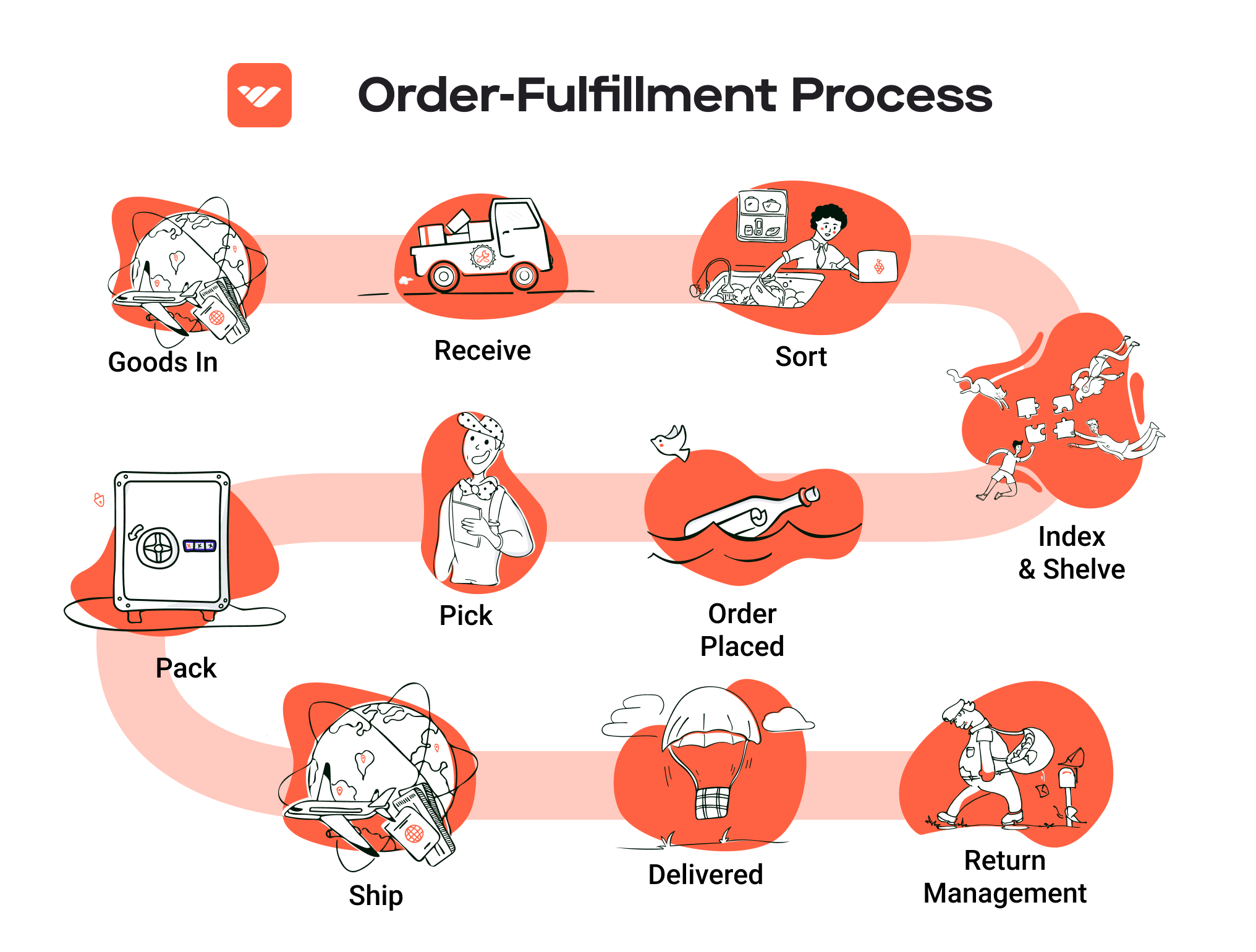
-
Customer Service: Amazon handles all customer inquiries and returns, providing a seamless experience for both sellers and customers.
-
Fees: Sellers pay for the storage of their products and fulfillment services, which are based on the size and weight of the items.
Pros of Using FBA
Prime Eligibility
Products fulfilled by Amazon are eligible for Amazon Prime, which offers members free two-day shipping. This can significantly enhance sales potential, as Prime members tend to shop more frequently and spend more than non-Prime members.
Customer Trust
Amazon has established itself as a trustworthy platform for online shopping. By using FBA, sellers can benefit from this trust. Customers are more likely to purchase products that are fulfilled by Amazon due to the assurance of reliable shipping and customer service.
Multi-Channel Fulfillment
FBA allows sellers to fulfill orders from other sales channels, such as their own websites or other online marketplaces. This flexibility means that businesses can scale their operations without needing to invest heavily in their logistics infrastructure.
Scalability
FBA provides the ability to scale operations quickly. Sellers can increase their inventory and reach a broader audience without worrying about the complexities of logistics and fulfillment.
Time Savings
By outsourcing fulfillment to Amazon, sellers can save significant time and resources, allowing them to focus on marketing, product development, and customer engagement.
Cons of Using FBA
High Fees
One of the major drawbacks of FBA is the cost. Sellers incur various fees, including storage fees for inventory and fulfillment fees based on the size and weight of the products. These costs can quickly add up, particularly for sellers with lower margins.
Strict Inventory Rules
Amazon has stringent inventory management policies. Sellers must adhere to these rules, which can be challenging, especially for those with large inventories or diverse product lines. Failure to comply may result in additional fees or penalties.
Commingling Risks
When using FBA, products from different sellers can be stored together, which is known as commingling. This can create risks for sellers, such as receiving returns that do not belong to them or issues related to counterfeit products. Sellers should consider using the stickered inventory option to mitigate these risks.
Limited Control
While FBA offers many benefits, it also means giving up some control over the fulfillment process. Sellers have limited visibility into the handling of their products once they are in Amazon’s hands, which can be concerning for some businesses.
Inventory Management Challenges
Managing inventory levels can be tricky with FBA. Sellers must forecast demand accurately to avoid overstocking or running out of stock, both of which can lead to lost sales or additional fees.
Who is FBA Best For?
FBA is particularly well-suited for:
-
Small to Medium-Sized Businesses: Companies that are looking to scale their operations without investing heavily in logistics may find FBA to be an attractive option. It allows them to tap into Amazon’s extensive customer base and fulfillment network.
-
E-commerce Entrepreneurs: Startups and individual sellers who want to focus on product sourcing and marketing rather than logistics can benefit from FBA’s comprehensive services.
-
Brands with Established Products: Companies that already have a successful product and are looking to expand their reach can leverage FBA to boost sales, especially if their products are suitable for the Prime customer base.
-
Sellers with Seasonal Products: Businesses that experience fluctuating demand can utilize FBA to manage inventory effectively during peak seasons without the burden of maintaining a large warehouse.
In conclusion, while Fulfillment by Amazon offers numerous advantages that can facilitate growth and efficiency, it is essential for e-commerce business owners to carefully weigh these benefits against the associated costs and risks. By understanding both sides, sellers can make an informed decision about whether FBA aligns with their operational goals and business model.
Core Services Offered by Fulfillment Centers
Inventory Management & Warehousing
Inventory management and warehousing are foundational services provided by fulfillment centers, crucial for maintaining the balance between supply and demand. Fulfillment centers utilize sophisticated inventory management systems to track stock levels in real time, ensuring that e-commerce businesses always have the right products available when customers make purchases.
The benefits of effective inventory management include reduced holding costs, minimized stockouts, and enhanced order accuracy. By leveraging advanced technology, such as barcoding and RFID, fulfillment centers can monitor inventory movements, predict demand trends, and automate reorder processes. This not only streamlines operations but also allows businesses to focus on scaling their sales without the burden of managing inventory logistics.
Moreover, by utilizing a centralized warehousing approach, e-commerce businesses can benefit from economies of scale. They can store large quantities of products in strategically located fulfillment centers, leading to lower shipping costs and faster delivery times to customers. This is particularly advantageous for businesses looking to expand their reach and improve customer satisfaction through timely deliveries.
Pick and Pack Services
Pick and pack services are essential for the efficient processing of customer orders in e-commerce. This service involves selecting items from the warehouse (picking) and preparing them for shipment (packing) according to the specific requirements of each order. Fulfillment centers employ trained staff and automated systems to streamline this process, ensuring accuracy and speed.
The primary advantage of pick and pack services is the significant reduction in order fulfillment times. By outsourcing this function to a fulfillment center, e-commerce businesses can leverage the expertise and infrastructure of the center, allowing them to fulfill orders faster than if they were handling these tasks in-house. This is particularly beneficial during peak seasons or promotional events when order volumes surge.
Additionally, fulfillment centers often offer customizable packing options, including branded packaging and gift wrapping, enhancing the customer experience. This personalization can lead to increased customer loyalty and repeat business. Effective pick and pack services also minimize errors, reducing the costs associated with returns and exchanges, thus improving overall profitability.
Kitting and Assembly
Kitting and assembly services involve combining multiple products into a single package or preparing products for sale by assembling them according to specific requirements. This can include bundling complementary items, creating gift sets, or assembling products that require multiple components.
The benefits of kitting and assembly are multifaceted. For e-commerce businesses, these services can simplify the order fulfillment process by reducing the number of individual items that need to be picked and packed. This not only speeds up the fulfillment process but also enhances inventory management by decreasing the overall number of SKUs that need to be tracked.
Kitting can also provide a competitive edge by allowing businesses to offer unique product combinations that appeal to customers. For example, a retailer selling beauty products can create kits that include a selection of items tailored for specific skin types or occasions. This not only increases the average order value but also enhances the customer experience by providing curated options.
Furthermore, fulfillment centers equipped with kitting and assembly capabilities can support promotional activities by quickly adapting to new product launches or seasonal offerings. This agility allows businesses to respond promptly to market demands, maximizing sales opportunities.
Returns Management (Reverse Logistics)
Returns management, or reverse logistics, is a critical service that addresses the challenges associated with product returns. Fulfillment centers offer streamlined processes for handling returns, from receiving and inspecting returned items to restocking or refurbishing them for resale.
Efficient returns management provides several advantages for e-commerce businesses. Firstly, it enhances customer satisfaction by ensuring that the return process is hassle-free and efficient. A smooth returns process can significantly influence a customer’s decision to shop with a brand again, particularly in an era where consumers expect easy returns.
Secondly, effective reverse logistics can help businesses recover value from returned products. Fulfillment centers can assess the condition of returned items and determine whether they can be restocked, repaired, or recycled. This not only minimizes losses associated with returns but also contributes to sustainable practices by reducing waste.
Moreover, a well-managed returns process can provide valuable insights into customer behavior and product quality. By analyzing return data, businesses can identify patterns that may indicate issues with specific products or marketing strategies, enabling them to make informed decisions that improve overall performance.
In conclusion, fulfillment centers offer a range of core services that are instrumental for e-commerce businesses aiming to scale their operations. By leveraging these services, businesses can enhance efficiency, reduce costs, and improve customer satisfaction, ultimately driving growth in a competitive marketplace.
How to Choose a Fulfillment Partner: A 6-Point Checklist
Location & Warehouse Network
Why It Matters:
The geographical location of your fulfillment partner’s warehouses can significantly impact shipping times and costs. A strategically located partner can help ensure faster delivery to your customers and reduce shipping expenses.
Key Questions to Ask:
1. Where are your warehouses located, and how do they align with our target customer demographics?
2. What is your average shipping time to key regions?
3. Do you have a network of fulfillment centers that can support omnichannel distribution?
4. How do you manage inventory across multiple locations to optimize shipping costs?
Technology & Integrations
Why It Matters:
In today’s fast-paced e-commerce environment, having a robust technological infrastructure is crucial. Your fulfillment partner should offer technology that integrates seamlessly with your existing systems, such as your e-commerce platform, inventory management software, and customer relationship management (CRM) tools.
Key Questions to Ask:
1. What technology do you use for order processing and inventory management?
2. Can your system integrate with our existing e-commerce platform?
3. How do you handle real-time inventory updates?
4. Do you offer reporting and analytics tools to help us track performance?
Specializations (e.g., Cold Storage, Oversized Items)
Why It Matters:
Different businesses have varying requirements based on their products. If you sell perishable goods, oversized items, or fragile products, you’ll need a fulfillment partner with the right specializations to handle these unique needs safely and efficiently.
Key Questions to Ask:
1. What specific product types do you specialize in handling?
2. Do you have facilities for cold storage or handling hazardous materials?
3. How do you ensure the safe handling and storage of delicate or oversized items?
4. Can you accommodate seasonal fluctuations in inventory?
Scalability & Capacity
Why It Matters:
As your business grows, your fulfillment needs will evolve. Choosing a partner that can scale alongside your growth is essential to avoid disruptions in service and maintain customer satisfaction.
Key Questions to Ask:
1. What is your current capacity for handling orders?
2. How do you manage scalability during peak seasons or sales events?
3. What measures do you have in place to prevent stockouts or overstock situations?
4. Can you provide a timeline for scaling operations if our business grows rapidly?
Pricing and Contracts
Why It Matters:
Understanding the pricing structure and terms of service is vital to avoid unexpected costs that can erode your margins. A transparent pricing model will help you budget effectively and make informed financial decisions.
Key Questions to Ask:
1. What is your pricing structure (e.g., per order, storage fees, pick and pack fees)?
2. Are there any additional costs we should be aware of (e.g., for returns, special handling)?
3. Can you provide a sample contract for review?
4. What is the policy for contract termination or changes in service?
Customer Support & Reviews
Why It Matters:
Exceptional customer support can make a significant difference in your operational efficiency and overall satisfaction. A partner that is responsive and provides excellent support will help you resolve issues quickly, ensuring minimal disruption to your business.
Key Questions to Ask:
1. What kind of customer support do you offer (e.g., phone, email, chat)?
2. What are your average response times for customer inquiries?
3. Can you provide references or case studies from current clients?
4. How do you handle disputes or issues that may arise during the fulfillment process?
Conclusion
Choosing the right fulfillment partner is a critical decision that can influence your e-commerce success. By carefully considering the factors outlined in this checklist, you can make an informed choice that aligns with your business goals and customer expectations. Prioritize partners who demonstrate transparency, reliability, and a commitment to supporting your growth.
Understanding Fulfillment Pricing: A Breakdown of Common Fees
Initial Setup Fees
When partnering with a fulfillment center, the first expense you may encounter is the initial setup fee. This fee typically covers the costs associated with onboarding your business into the fulfillment system. It may include account setup, integration with your e-commerce platform, and initial training for your team on how to use the fulfillment center’s software.
The calculation of initial setup fees can vary significantly based on the complexity of your operations. Some fulfillment centers charge a flat rate, while others may assess fees based on the number of SKUs you plan to store or the volume of orders you expect to fulfill. It’s essential to ask for a detailed breakdown of what the setup fee includes to avoid unexpected costs.
Receiving Fees
Receiving fees apply when your products arrive at the fulfillment center. This fee covers the labor and resources required to unload, inspect, and inventory your goods. Typically, fulfillment centers charge a per-unit fee, which may vary based on the size and weight of the items being received.
Calculation of receiving fees can depend on several factors:
– Volume of Goods: Higher volumes may lead to lower per-unit costs.
– Complexity of Receiving: Items that require special handling or inspection may incur additional charges.
– Packaging: If your products arrive in bulk packaging that needs to be broken down, this can also influence the fee.
Understanding how receiving fees are structured can help you manage costs effectively, especially if you anticipate high volumes of incoming shipments.
Storage Fees (per pallet/bin)
Storage fees are charged for keeping your inventory within the fulfillment center. These fees are typically calculated based on the space your products occupy, measured in pallets or bins. Fulfillment centers may offer different pricing tiers depending on the duration your products remain in storage.
Key factors influencing storage fees include:
– Duration of Storage: Longer storage times usually incur higher fees.
– Space Utilization: Efficiently utilizing storage space can help reduce costs. For instance, stacking items or using bins effectively can lower the total space your products occupy.
– Seasonal Demand: Some fulfillment centers adjust storage fees during peak seasons, so it’s crucial to plan ahead for your inventory needs during busy periods.
By keeping track of your inventory turnover and planning your storage strategy, you can minimize these fees.
Pick & Pack Fees (per item/order)
Pick and pack fees are charged for the labor involved in retrieving items from storage and packaging them for shipment. This is a critical component of the fulfillment process, as it directly affects order accuracy and customer satisfaction.
Fulfillment centers typically charge a fee per item picked and packed, with some providers offering tiered pricing based on order volume. Factors that can influence these fees include:
– Order Complexity: Orders with multiple items or varying sizes may incur higher fees due to the increased labor involved.
– Packaging Requirements: Customized packaging or special handling may also lead to additional charges.
– Volume Discounts: Larger orders may qualify for reduced per-item fees, making it essential to understand how your order volumes can impact costs.
Streamlining your order process can help control pick and pack fees, ensuring efficient fulfillment.
Shipping Fees
Shipping fees encompass the costs associated with sending orders from the fulfillment center to customers. These fees can vary widely based on several factors, including the shipping method, destination, and weight of the package.
Shipping fees are generally calculated based on:
– Carrier Rates: Fulfillment centers often partner with various shipping carriers, and the rates can differ based on the carrier’s pricing structure.
– Shipping Zones: Costs typically increase with the distance from the fulfillment center to the delivery address.
– Service Level: Expedited shipping options will incur higher fees compared to standard shipping.
To optimize shipping costs, consider negotiating rates with your fulfillment partner or evaluating multiple shipping carriers for the best deals.
Conclusion: Tips for Getting an Accurate Quote
To obtain an accurate quote from a fulfillment center, follow these practical steps:
-
Provide Detailed Information: Be clear about your product types, order volumes, and specific requirements. The more details you provide, the more accurate the quote will be.
-
Ask for Breakdown of Fees: Request a detailed breakdown of all potential fees, including any variable costs that may arise based on your operations.
-
Inquire About Discounts: Ask about volume discounts or promotional rates that may apply to your business, especially if you expect to grow.
-
Compare Multiple Quotes: Don’t hesitate to reach out to several fulfillment centers for quotes. This will give you a better understanding of market rates and help you find a partner that fits your budget and operational needs.
By understanding these fulfillment pricing models and following these tips, you can make informed decisions that support your business’s growth and scalability.
Frequently Asked Questions (FAQs) about Fulfillment
1. What is the Amazon Fulfillment Center-CMH7?
Amazon Fulfillment Center-CMH7, located in New Albany, Ohio, is a large-scale facility designed to store, pack, and ship a diverse range of products for Amazon. The center focuses on efficiency and speed, playing a vital role in ensuring timely delivery to customers across the region.
2. How does the fulfillment process work at CMH7?
At CMH7, the fulfillment process typically involves receiving inventory, storing products in designated areas, picking items based on customer orders, packing them securely, and shipping them out to customers. This process is optimized for speed and accuracy, leveraging advanced technology and automation to handle high volumes of orders.
3. What is the difference between a warehouse and a fulfillment center?
A warehouse primarily focuses on storing products for long periods, often with minimal handling. In contrast, a fulfillment center is designed for rapid order processing and shipping, emphasizing quick turnaround times. Fulfillment centers are integral to e-commerce operations, managing not just storage but also order picking, packing, and shipping.
4. What is a Third-Party Logistics Provider (3PL)?
A Third-Party Logistics Provider (3PL) is a company that offers logistics services to businesses, including transportation, warehousing, and fulfillment. Utilizing a 3PL can help businesses scale operations without needing to invest in their own logistics infrastructure, allowing them to focus on core activities such as marketing and sales.
5. How much do fulfillment services typically cost?
The cost of fulfillment services can vary widely based on several factors, including the volume of orders, the types of products being shipped, storage needs, and additional services like kitting or custom packaging. Generally, businesses can expect to pay fees for storage, order picking, packing, and shipping, with many providers offering tiered pricing based on order volume.
6. What types of products can be fulfilled at CMH7?
CMH7 can handle a wide range of products, including electronics, household items, clothing, and more. However, there may be restrictions on certain items, such as hazardous materials or perishable goods. It’s essential for sellers to check Amazon’s guidelines to ensure their products are eligible for fulfillment through this center.
7. How does Amazon ensure the accuracy of order fulfillment at CMH7?
Amazon employs various technologies, including barcoding systems and automated picking solutions, to enhance accuracy in order fulfillment. Employees are trained to follow strict protocols to minimize errors, and the system is designed to provide real-time inventory tracking and updates, ensuring that orders are fulfilled correctly.
8. Can small businesses use Amazon Fulfillment Center-CMH7?
Yes, small businesses can leverage Amazon’s fulfillment services through the Fulfillment by Amazon (FBA) program. By using FBA, small businesses can store their products at CMH7 and take advantage of Amazon’s logistics network, benefiting from faster shipping and access to Amazon Prime customers.
9. What are the benefits of using Amazon’s fulfillment network?
Using Amazon’s fulfillment network offers numerous advantages, including access to a vast logistics infrastructure, fast and reliable shipping options, improved customer satisfaction through Prime eligibility, and reduced operational burdens for businesses. This allows sellers to focus on growth and marketing while Amazon handles logistics.
10. How can I get started with fulfillment at CMH7?
To start using fulfillment services at CMH7, businesses can enroll in the Fulfillment by Amazon (FBA) program. This involves creating an Amazon seller account, listing products, and preparing inventory for shipment to the fulfillment center. Once enrolled, sellers can manage their inventory and orders through the Amazon Seller Central platform, streamlining the fulfillment process.
Conclusion: Is Outsourcing Fulfillment the Right Move for Your Business?
Evaluating the Benefits of Outsourcing Fulfillment
Outsourcing fulfillment can be a game-changer for e-commerce businesses aiming to scale efficiently. The primary advantages include significant time savings, enhanced scalability, and access to specialized expertise. By delegating logistics and order fulfillment to a dedicated partner, you can free up valuable time that can be redirected towards strategic initiatives, product development, and customer engagement. This shift not only fosters growth but also allows you to focus on what you do best.
Scalability is another critical benefit. As your business grows, so do your fulfillment needs. Outsourcing provides the flexibility to adjust quickly to demand fluctuations without the burden of investing in additional infrastructure or staff. A reliable fulfillment partner can seamlessly scale operations, whether you experience a sudden spike in orders during a holiday season or need to manage seasonal slowdowns.
Moreover, partnering with a fulfillment service brings in invaluable expertise. Established fulfillment centers, such as Amazon’s CMH7 facility, leverage advanced technology and proven processes to ensure efficient handling, packing, and shipping of your products. Their experience can help you optimize logistics, reduce shipping times, and enhance customer satisfaction.
Choosing the Right Partner for Growth
However, it’s crucial to choose the right fulfillment partner to ensure that your growth aspirations are met. Not all fulfillment services are created equal, and aligning with a partner that understands your business model and can adapt to your specific needs is essential.
Call to Action
To determine if outsourcing fulfillment is the right next step for your business, consider conducting an audit of your current shipping processes. Evaluate your operational bottlenecks, shipping costs, and customer satisfaction levels. This analysis will provide clarity on whether partnering with a fulfillment service could enhance your efficiency and drive growth. Remember, the right partner can transform your logistics into a competitive advantage, positioning you for sustainable success in the ever-evolving e-commerce landscape.
Important Disclaimer
⚠️ Important Disclaimer
The information in this guide is for educational purposes. Fulfillment services, pricing, and platform features change frequently. Always conduct your own due diligence and consult with providers directly before making business decisions.
